|
||||||||||
|
FEATURESShanghai Culture Lost 上海:城市风情依旧,文化何处寻觅?Xu Jilin 许纪霖Translated by Geremie R. Barmé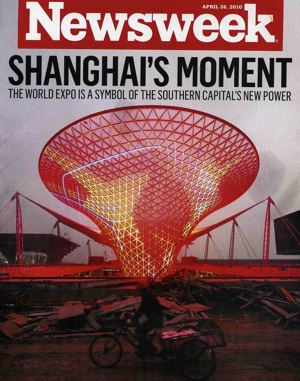 Fig. 1 Cover of Newsweek, 26 April 2010. A decade ago, I entertained a visitor from New York. He was a sophisticated person who came to Shanghai with high hopes. In fact, he was searching for the ‘New York of the East’. He left crestfallen but, before flying out, he asked me: why does China have a Paris but no New York? I took his quandary to mean that he understood that Beijing doubles as the nation’s political and cultural capital, while all that Shanghai can aspire to is its economic centre. Once upon a time Shanghai was a global cultural capital. What happened? During this the year of the Shanghai Expo the world has trained its gaze on the banks of the Huangpu River: Pudong 浦东 and Puxi 浦西. Just what does Expo promise our city? Is there a hope of a cultural renaissance? What is it that is holding Shanghai back from becoming a New York, or even a Frankfurt? Expo proffers an opportune moment for this city to take stock and for its people to take pause. A Cultural Monopoly Bequeathed by the Planned EconomyIn the first half of the twentieth century, Shanghai enjoyed a resplendent cultural era. The city was the most famous cultural centre east of the Suez Canal. Neither Tokyo nor Hong Kong could compete. While Beijing remained the academic centre of the country during the Republican era [1912-49], Shanghai was home to the nation’s media, the publishing, film and entertainment industries, as well as the performing arts. Money+culture created the efflorescence of Shanghai. Following the founding of New China in 1949, and the relocation of the capital to Beijing, political fiat determined that the cultural gravity of the country would shift northwards. Major enterprises like Commercial Press, Chung-hwa Books, Joint Publishing, along with The Observer, not to mention the cultural talents behind these companies, were uprooted and headquartered in Beijing. Now, all these years later, the ‘Beijing Shanghai faction’ [zai Jing Hai pai 在京海派] that had been forced to relocate at that juncture remains highly active. Despite this depredation, with its remaining film, literary and media establishment Shanghai still enjoyed a reputation as being ‘half of China’s culture’ [banbi jiangshan 半壁江山] right up until the 1980s. When speaking to foreigners I generally describe the demographics of China’s cultural elites in the following terms: half are clustered in Beijing and half of the other half are in Shanghai, while the other 25% are spread out in ‘second tier’ cities like Guangzhou, Chengdu, Xi’an, Wuhan, Nanjing and Hangzhou. The early 1990s saw Shanghai’s economic re-emergence. Given the strong traditions of the city people were confident this would also presage a cultural rebirth. Now, two decades later we have seen scant evidence of the city as an emergent global cultural centre. Indeed, the government remains extremely cautious about advancing such a vision for Shanghai. They do not want to appear as though this southern city is in competition with the northern capital. Shanghainese, however, constantly decry the ‘decline of Shanghai culture’. The city has not caught up with Beijing and it is even falling behind the second tier cities. The booming media industry of Guangzhou, for instance, has far outstripped that of Shanghai. 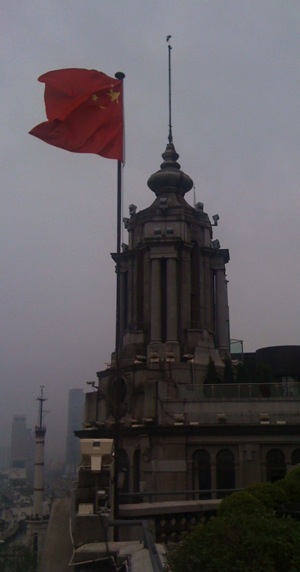 Fig. 2 A view from M on the Bund. [Photograph: GRB] Why is there such a chasm between the economic achievement and the cultural realities of Shanghai? The greatest wealth a city can possess is its history; it’s greatest encumbrance is also a result of its heritage. Since the creation of Shanghai as a port in 1843 two parallel traditions have developed. One is a cultural tradition that evolved up to 1949; the other is the legacy of the planned economy that was imposed on the city subsequently. Shanghai’s cultural heritage evolved during the era of colonisation, a time that celebrated openness, freedom and competition. This was when Shanghai was in sync with the rest of the world. It was these unique cultural underpinnings that made it possible for the city to transform itself so rapidly after 1992. Meanwhile, from the 1950s up to the 80s, another tradition, one born of the planned economy, was inculcated. This was a time of inward-looking conservatism, of reliance on the state, when authority was obeyed and a fear of open competition prevailed. It was an era of monopoly control. The legacy of the planned economy is manifest as a pervasive systemic inertia; similarly, it saturates the depths of the city’s mass psychology. In a planned economy culture is a state monopoly. Although the cultural industries of the city have been marketised over the past decade—the electronic media, the publishing industry, theatres and writers have been forced out of state employment and into the private realm—but many are like spoilt children who still refuse to be weaned off the tit of state largesse. They are too used to finding succour in the system, too dependent on their perks, too enamoured of their monopolistic privileges. Most of Shanghai’s cultural assets are still the preserve of state-owned enterprises. As a result the cultural marketplace is not nearly as mature as that of Beijing. People in the arts are generally wary of competition and prefer to pursue the tried and true paths to success. They think like real ‘company men and women’. Take the Shanghai TV industry, for example. In the past the three companies Shanghai, Eastern and Satellite TV developed a competitive troika. After they were amalgamated television bandwidth was divvied up so that they each of them were allotted a particular sphere of influence. Now, whenever journalists go out to cover a story they have three microphones instead of one—the same material is used to service different market segments and demographics. The microphone might carry different badging but it’s still the same journalist. It is hardly surprising then that the evening news presents audiences with ‘one Shanghai, one voice’. The media control the airwaves through such ‘productive collaboration’. The result is lacklustre in comparison to the ruthless competition we witness between the different stations that work under the aegis of China Central TV (CCTV) in Beijing. The Flourishing of Culture in Shanghai, but Not Shanghai Culture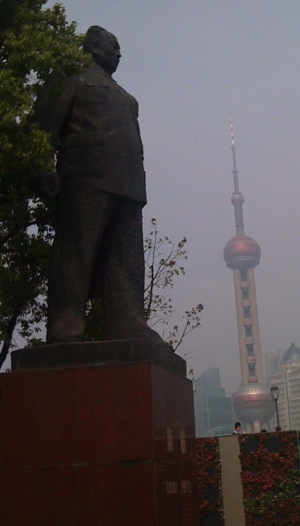 Fig. 3 Chen Yi 陈毅, post-1949 Mayor of Shanghai. [Photograph: GRB] Although they sit in Shanghai, they live according to Beijing time. While China’s economic development has become increasingly regionalised in recent years, cultural change is still highly centralised. Things are still judged according to a national standard. The gold standard still consists of the awards that the Centre grants its underlings. It would appear that culture itself is no different from sports competitions and, just as on the sports field, a common standard can be applied to determine all questions of quality and ranking. Things were different in the past: the North was the North, the South the South. Then Shanghai people wouldn’t deign to compare themselves with those of the Northern Capital. Shanghai culture has lost its autonomy and internal standards because the state ideocracy has become directly and massively involved in cultural production. The state determines the allocation of cultural resources and the rules of cultural competition. As a city with a venerable history of dirigisme Shanghai now boasts a bureaucracy with the best management skills in the country. The bureaucracy’s ability to oversee culture is similarly outstanding. Shanghai enjoys a bureaucratic power grid that is highly efficacious, all pervasive, top-down and monolithic in nature. By comparison Beijing is a city with a pluralistic environment where there is room for power play. Shanghai enjoys no such interstices, hence no room for power play. In a city dominated by monopoly enterprises it is no surprise that there is be no room for individual cultural development or a flourishing cultural market. Prior to 1949 Shanghai culture enjoyed a unique purchase, it was unabashedly a global culture. That is because there were pluralistic sources of power created by the foreign concessions. Surely, the cultural market might have been chaotic, but it was free. That’s why it attracted cultural figures from all directions. Today, Shanghai enjoys a regulated and orderly management. But, as they say, ‘If the water is too clear fish won’t live in it’ [shui zhi qing ze wu yu 水至清则无鱼]—and thus today’s cultural figures are all drawn northward, and they settle in Beijing. In the North there are large numbers of ‘Beijing sojourners’ [beipiaozu 北漂族]. The internationally famous 798 Art Zone [in Dashanzi, Beijing] is not the result of state planning. Initially, it was just a place where ‘Beijing sojourners’ gathered. Shanghai, however, cannot boast of ‘Shanghai sojourners’ [haipiaozu 海漂族], for artists are either scared of drowning in the Huangpu River or shrivelling up on the Bund. The Municipal Party Secretary of Shanghai, Yu Zhengsheng, repeatedly expressed his dismay that [the founder of Alibaba] Ma Yun 马云 couldn’t be persuaded to stay in Shanghai.[1] It is difficult for local Shanghai enterprises to expand and become major players, but it is just the same for Shanghai culture. Some local bureaucrats would deny that ‘Shanghai culture is on the skids’. They have statistics and facts aplenty to prove just how vibrant the cultural scene in the city actually is. It is true that, without having to travel, we in Shanghai can enjoy concerts by leading international performers, as well as Broadway shows, ice-follies, Formula One races, masters’ tennis tournaments, as well as the masterpieces of Versailles. In 2010, Expo has proven that the city has become a cultural port for all nations of the world. Shanghai has always been a global city. It will take unto itself anything that is of good quality, in particular those things that are Western, modern and fashionable. It is an East-West entrepôt. Those who are lucky enough to live in Shanghai are actually living in a world city, a constantly changing window on the marvels of the world. But today what flourishes is not ‘Shanghai culture’ as such, but rather ‘culture in Shanghai’. The better the foreign imports the more lacklustre our local offerings appear. They spent a small fortune to commission a theme song for the 2010 Expo Shanghai—‘2010, We’re Waiting for You’ [2010 nian, deng ni lai 2010年等你来], but it was recently revealed that the music for this composition had been lifted from an old Japanese song. The theme of the song itself was copied from the [Beijing Olympics’] ‘Beijing Welcomes You’ [Beijing huanying ni 北京欢迎你]. It’s all been terribly embarrassing, although taken from another angle it is just further proof that Shanghai culture lacks originality. 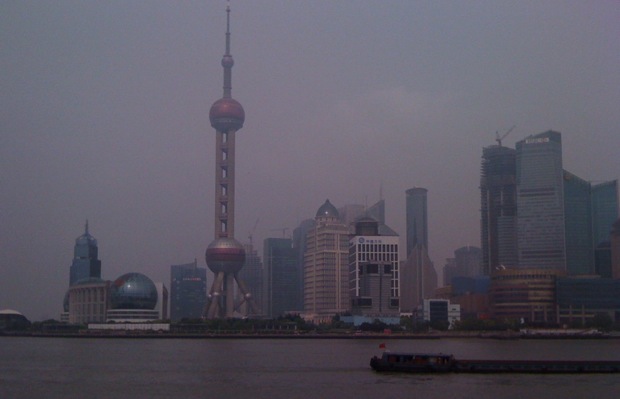 Fig. 4 Pudong 浦东 from the Bund. [Photograph: GRB]
Historically speaking one of the reasons why Shanghai has been better at imitating than creating is that it doesn’t have the grounding in local cultural traditions of the kind enjoyed by Xi’an or Beijing. Being rootless is not itself a problem. After all, a city can create a kind pluralism on the basis of the talents of those who immigrate to it. New York is just such a city, as was the Shanghai of the Republican period, a city with a multifaceted, hard-to-pin-down culture that melded East with West. The culture of Shanghai 上海 was, in short, ‘of the ocean’ [hai 海]: the ocean is boundless and expansive, taking into it the flows of a myriad of rivers. But after the ocean subsumes those estuarine waters, they become part of a larger whole, a cultural vastness. After reaching Shanghai local Chinese and foreign cultural material was decoupled from its place origins to become part of what was known as the ‘Shanghai Style’ [Haipai 海派]. And what developed therefrom was: Haipai Western food, Haipai-Western-style dress, Haipai-English (pidgin or yangjingbang Yingwen 洋泾浜英文). There is even Haipai-Sichuan cuisine and Haipai-Beijing Opera! Today it is Beijing, not Shanghai, that is more tolerant of outsiders. All kinds of local culture can co-exist there in their original state, mutually independent and in competition. Together they contribute to the flourishing pluralism of what is a major urban culture. However, in Shanghai the centrifugal cultural forces are too strong. When subcultures appear in Shanghai they are transformed and homogenised by the city as a whole; their plurality gradually melds until they lose their independence and add themselves to uniformity. Shanghai culture lacks particularity, is devoid of its own uniqueness. Everything seems both familiar since it harks back to the past, yet it is also a little strange. But perhaps this lack of particularity is the very thing that sets Shanghai apart. If, however, Shanghai culture cannot undergo a profound opening up, and if Shanghai fails over time to attract and retain outsider cultural figures, this city’s ‘peculiarity of being without particularity’, the ‘homogeneity born of non-plurality’ will only increase and destroy that very thing that would be Shanghai culture. 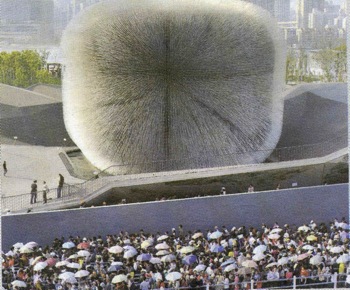 Fig. 5 The much-celebrated British Pavilion at the Shanghai Expo. In recent years, the crisis of Shanghai culture has also been reflected in the crisis of the Shanghai language [Sanghai-o 上海话]. Life is lived through language, the living essence of a local culture is in its regional language. The successful promotion of Standard Chinese [Putong hua 普通话] over the years has led to many younger Shanghainese being unable or uncomfortable speaking our language. Unlike Guangzhou [where Cantonese is common in public] in Shanghai the public use of our dialect is forbidden, and only the Shanghai-dialect program ‘老娘舅’ remains on TV.[2] It is so crass that most educated parents won’t let their children watch it. Standard Chinese is an artificial language lacking the vitality of an everyday spoken language. With young people accustomed to using a stiff, artificial language like this to express themselves, it becomes impossible for them to create a Shanghai culture with true local colour. How could it ever compare with the culture generated in the ‘Beijing argot’ [Jing pianzi 京片子] or that of the North-east, North-west, or of the Cantonese speaking areas? Greater Shanghai and the Petit-bourgeoisieCulture is not, after all, the natural state of the human species, and one could argue that the downturn in Shanghai culture is emblematic of the crisis of the spirit of the Shanghainese themselves. During his time as mayor of Shanghai Zhu Rongji observed that ‘Shanghai people are clever but not wise’ [Shanghairen jingming er bu gaoming 上海人精明而不高明]. This is despite the fact that on a global level Shanghainese are among the cleverest. They are worldly, calculating and possessed of all the talents necessary for crafty urbanites. Shanghainese are brilliant at taking advantage of opportunities; they are heroically opportunistic. The thing that has always kept them ahead of the curve, regardless of their lack of history and cultural roots, is their adaptability to changing circumstances and new opportunities. Whether they travel overseas or just stay within China the Shanghainese are most adaptable. They will not stubbornly hold to some theoretical dogma or traditional mode of ethics. They seek out spaces to survive and to thrive. It is their forward-looking adaptability that makes this possible. The Shanghainese as a whole are little given to nostalgia for the past. They have an enthusiasm for new things and ideas. They always want to be on top of the latest fashion, be ahead of the trends, if not indeed setting them. From the 1990s the tendency to seek the new and keep abreast of the times has become more powerful than ever. All cultural phenomena, ideas, buildings and products have to be in sync with the most advanced and fashionable global developments. It is this spirit that has fostered the modern temper of Shanghai and that symbolises its achievements. It is this very spirit, however, that means that Shanghai culture is built on shifting sands and lacks a solid basis: it is adaptable but not grounded. It is worldly and perceptive, but it lacks the self-confidence and gravitas of that ancient city to the North. 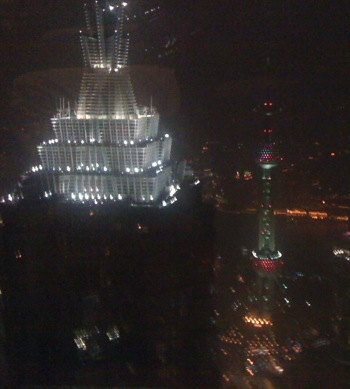 Fig. 6 A night view over Pudong. [Photograph: GRB] I’ve been a university teacher for nearly three decades. In recent years I’ve noticed that young Shanghainese fall into two broad categories: either they are outstanding or absolutely mediocre. Of course, the former are in a minority, but this group is broadminded, rational and highly motivated. Their number includes [the athletes] Yao Ming 姚明 and Liu Xiang 刘翔, as well as [the blogger] Han Han 韩寒. They are all international-quality talents. Unfortunately, the majority of Shanghai students grow up mollycoddled by their parents, enjoying more comfortable circumstances than their fellows in other parts of China. They have no soaring ambition and they are satisfied with a modicum of peace. Their only aim is to find a stable job after graduating and to settle down in an apartment paid for by their parents. Theirs is the smallest possible world. What is true of our students today also applies to their teachers. The majority of Shanghai scholars are solely concerned with their immediate advantage and the quotidian realities of life next to the Suzhou River 苏州河. Most of their research projects are related to Shanghai. Of course, they are topic-appropriate, professionally honed and politically correct to a fault. Academically they are of dubious value. The Shanghainese of today are not like previous generations. They lack the spirit of cultural adventure. Their fashions are not too avant-garde, and their stance of rebellion is never too extreme. Theirs is a middle-of-the-road urbanity. It has leached out the possibility of extremism, leaving in its stead a comfortable urban petit-bourgeois culture. Our urban class is nothing if not practical. Works of great talent, vast scale or true daring are rarely produced in Shanghai. Ours is a city of the mediocre and the mild. In the Republican era, Shanghai enjoyed a bifurcated pluralism: there was the bourgeois tradition of the middle class, as well as the bohemianism of the cultural leftwing. They both contributed to the invaluable tensions that generated a unique Shanghai culture. But the edge of Shanghai was long ago worn down. All that remains is a bourgeois culture that is as comfortable and reassuring as a warm bath. This culture then is entirely secular and apolitical. It is at a distant remove from the public realm of politics; instead, it cleaves to the daily routines of the urban masses. Shanghai enjoys a plethora of lifestyle magazines—be they related to clothes, leisure or food—and these are highly professional products; they are slick and appealing with just the right admixture of the sensational and the refined. The mainstream of Shanghai culture is that of the urban masses and the petit-bourgeoisie living in their foreign-style houses. There is a clear demarcation between the two. Ours is a Great Shanghai inhabited by the petit-bourgeoisie then [Da Shanghai, xiao shimin 大上海、小市民]. As China’s largest city and a global centre of commerce, Shanghai will continue to be castigated if it fails to become a major cultural centre like New York. The Expo 2010 Shanghai not only provides the city with vistas from abroad, more importantly it offers a view of the pluralism of other cultures. This is a heaven-sent opportunity. If Shanghai could only make the effort, could this not mark the beginning of a real cultural renaissance? Notes:* Source: http://new.21ccom.net/articles/sxpl/pl/article_201005058936.html. A short paragraph related to Yu Qiuyu 余秋雨 and Zhou Libo 周立波 was omitted from the translation as its import would have required extensive explicatory notes. [1] Translator’s note: See the report from March 2008, ‘马云离沪初衷:上海怕我们这样的创新公司’, http://news.csdn.net/n/20080303/114022.html. [2] Translator’s note: See http://www.smg.cn/index_columns/Index_Columns_01.aspx?lid=495. |